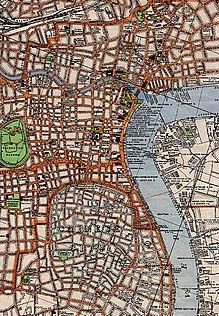Heatherwick Studio and Foster + Partners's multifunctional arts and culture complex was inspired by the open stages of traditional #Chinese theatres.
Images © Laurian Ghinitoiu
Images © Laurian Ghinitoiu
| The Bund | |||

"The Bund" in Simplified (top) and Traditional (bottom) Chinese characters
| |||
| Simplified Chinese | 外滩 | ||
|---|---|---|---|
| Traditional Chinese | 外灘 | ||
| Literal meaning | "Outer Beach" | ||
| |||
The Bund or Waitan (Chinese: 外滩; pinyin: Wàitān, Shanghainese: nga3thae1, literally: "Outer Beach") is a waterfront area in central Shanghai. The area centers on a section of Zhongshan Road (East-1 Zhongshan Road) within the former Shanghai International Settlement, which runs along the western bank of the Huangpu River in the eastern part of Huangpu District. The area along the river faces the modern skyscrapers of Lujiazui in the Pudong District. The Bund usually refers to the buildings and wharves on this section of the road, as well as some adjacent areas. It is one of the most famous tourist destinations in Shanghai. Building heights are restricted in the area.



沒有留言:
張貼留言